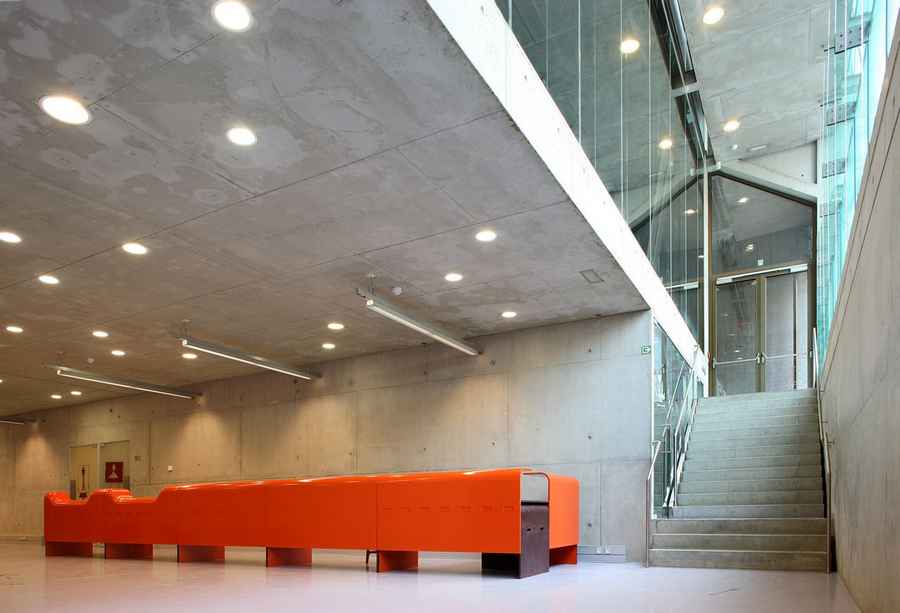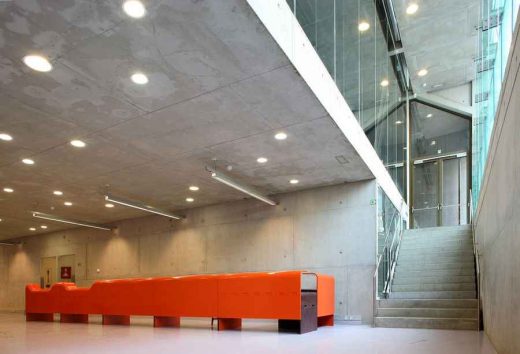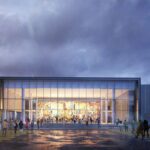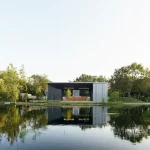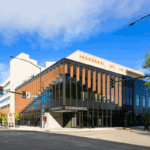BrOnks Youth Theater Brussels, Belgian Architecture, Architect, Project, Design Photos
The BrOnks Youth Theater
Brussels Theatre Building, Belgium design by MDMA l Martine De Maeseneer Architects
Design: MDMA l Martine De Maeseneer Architects
The BrOnks Youth Theater by MDMA l Martine De Maeseneer Architects : A Delicate Balance
22 Aug 2012
The BrOnks Youth Theater Brussels
Text by Thomas Daniell
As the first public building realized by MDMA, the BrOnks Youth Theater represents the culmination of two decades of practical and theoretical investigations. Indeed, the project has been underway throughout most of MDMA’s career – four distinct projects were designed for two different sites over a period of fourteen years.
The final version was commissioned in 2002 by the Flemish Community Commission of the Brussels Capital Region. BrOnks (an acronym for Brussel Onderwijs Kunst, or Brussels Education Art) synthesizes many of the spatial and compositional ideas present in MDMA’s earlier work, while taking a provocative stance on the question of how an architect might intervene in a historical city.
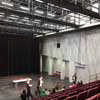
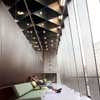
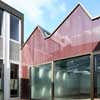
photographs : Filip Dujardin, Ghent
There are two main approaches to designing contemporary architecture for a traditional setting. The first is to mimic the existing, to blend in by making a more-or-less authentic pastiche of local vernacular building styles. The second is to contrast with the existing, to stand out by making an aggressive juxtaposition of incongruous forms and materials with the intention of enhancing and clarifying the qualities of both the historical context and the new building.
Given the irreconcilable demands being placed on the architect, it is rare for either approach to be fully satisfactory. Mimicry tends to be seen as inimical to the designer’s creativity and the city’s vitality – and, ironically, as damaging to the integrity of the very context to which it is ostensibly respectful. Contrast, on the other hand, all too often results in little more than temporary shock value that soon looks dated and awkward within the timelessness of its historical setting.
Set on a picturesque street in the heart of Brussels, the BrOnks takes a third approach, integrating with its context by means of analogy, extension, and occasional friction. Fitting precisely into the space available between its immediate neighbors, reinforcing the continuity of the roof profiles and eave lines along the street, the façade is a fully glazed wall, its profile distorted like a stage curtain in the process of being raised. Visible beyond the street façade is a second, inner façade, a floating wall containing large glazed cutouts that MDMA describes as a passe-partout (the border mat that sits behind the glass in a picture frame).
Transparent yet alive with shifting reflections, the radical openness of the glass wall makes a striking contrast with the sober stone façades and relatively small windows that dominate the surroundings – most vividly at dusk, as the BrOnks begins to glow like an enormous lantern, the silhouettes of people moving within only adding to the spectacle.
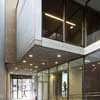
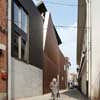
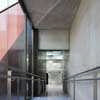
photographs : Filip Dujardin, Ghent
Yet this apparent permeability is not quite what it seems. The glazed façade does not open – the main entry and subentry are located either side – and while it may reveal the activities in the rehearsal hall within, immediately on the other side of the glass is a wide slot in the floor, a chasm open to the reception area on the basement level. The floor of the rehearsal hall itself is offset a meter above street level, another of the many disjunctions within the building that simultaneously invite and rebuff visitors as they move through it. In a sense, the architecture of the BrOnks is mostly interstitial, a negotiation between imposed constraints.
The building footprint is defined by the template of existing buildings and streets, and the building volume is forced partially underground by the legal height limit. Programmatic and acoustic requirements define the sizes and proportions of the two primary functional volumes, the rehearsal hall and theater.
They seem to be loosely suspended within the building shell, unrelated to the ground level datum. Attention is focused on the spaces that mediate between the outer walls and the two inner boxes: a café above and reception area below, all linked by a web of stairs, ramps, and corridors comprising unexpected physical and visual connections. At each intermediate landing on the central double-helical stair is an element that MDMA calls the “septum”: a rotating mirror-clad panel that is used to separate or connect the independent public and private circulation systems.
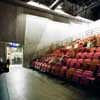
photograph : Marie Françoise Plissart, Brussels
The atmosphere throughout is robust and industrial, mostly bare concrete surfaces and volumes bathed in natural light. These raw, hardwearing spaces are counterbalanced by moments of extreme refinement, such as the smooth red counter in the reception area and the woven steel plates of the café ceiling structure.
The BrOnks Youth Theater is an architecture of paradox and deliberate contradiction, at once assertive and reticent, open and generous to its historical surroundings while sequestering a new, alternative world within. Sitting amid buildings that date back several centuries, the BrOnks oscillates between deference and impudence toward its elders – a very appropriate sensibility for an institution dedicated to nurturing and channeling youthful talent.
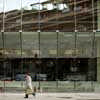
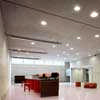
photographs : Filip Dujardin, Ghent
Thomas Daniell is a New Zealand-born, Hong Kong-based architect and writer. His books include After the Crash: Architecture in Post-Bubble Japan (2008) and Houses and Gardens of Kyoto (2010).
The BrOnks Youth Theater Brussels images / information from MDMA l Martine De Maeseneer Architects
Location: Brussels, Belgium
Belgian Architecture
Another Brussels Theatre Building on e-architect:
National Theatre Brussels
sca Architectes Associés

photograph : M-F.-Plissart
National Theatre Brussels
The large, main theatre hall, variable in size and shape, with a seating capacity of 752, of which 244 seats are on ground level, 239 seats within stalls (including the galleries) and 269 seats in the balconies (also including galleries).
Brussels Building – Latest Designs
Bruxelles Gare du Midi
Ateliers Jean Nouvel
Bruxelles Gare du Midi
Machelen-Diegem Masterplan
Maxwan
Brussels Masterplan
Cheval Noir Housing
L’Escaut-Gigogne
Cheval Noir Brussels
Covent Garden
Art & Build Architect
Covent Garden Brussels
Comments / photos for The BrOnks Youth Theater Brussels design by MDMA l Martine De Maeseneer Architects page welcome

